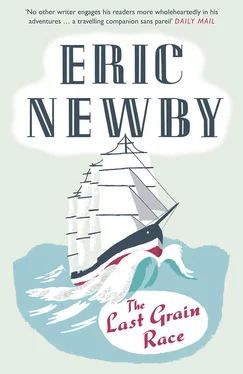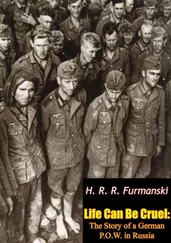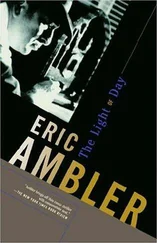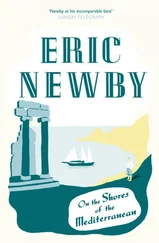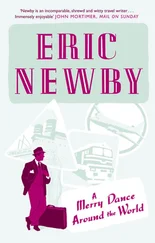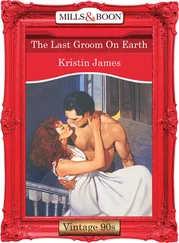1 ...7 8 9 11 12 13 ...16 ‘You can come down now,’ shouted the Mate. I did. It was worse than going up and more agonising as I was barefoot, with my shoes stuffed inside my shirt.
‘You were a fool to take your shoes off,’ said the Mate when I reached the deck. ‘Now you can learn to clean the lavatories.’
Since that day I have been aloft in high rigging many hundreds of times and in every kind of weather but I still get that cold feeling in the pit of the stomach when I think of the first morning out on the royal yard with the sheds of the York Dock below.
TECHNICAL INTERLUDE
(Surface at ‘That night I went ashorev…’)
In the afternoon I went with a number of other newly arrived crew to sign some papers at the office of the Finnish Consul. Afterwards Vytautas took me over the ship. The strength and size of her steel top hamper was matched by that of her immense steel hull – into which more than 4,800 tons of grain would be packed. Moshulu’s gross tonnage (that is to say, the entire internal volume expressed in units of 100 cubic feet to a ton) was 3,116. She drew twenty-six feet of water when loaded and measured 335 feet on the waterline.
She had a very handsome, fine bow entrance somehow disproportionate to her rather heavy overall appearance; a tiny poop only twenty feet long also contrived to spoil her looks when seen from the beam, but the general effect was undeniably impressive. Like Archibald Russell, Moshulu was fitted with bilge keels to make her more stable. Above the loadline the hull was painted black except for the upper works of the amidships, which were white. Her masts and spars were light yellow. Under the bowsprit there was no splendid figurehead like those of the Killoran and Pommern , only on the beak beneath the bowsprit a carved boss with a coat-of-arms picked out in yellow and blue, the house mark of Siemers, the Hamburg owners who had had her originally in the nitrate trade.
The masts, fore, main, mizzen and jigger, were each supported by a system of heavy fore-and-aft stays, six on the foremast, four on the main and mizzen, three on the jigger. On the foremast the forestay that supported it was a double stay set up taut with rigging screws shackled into the deck on the fo’c’sle head. The fore topmast stay, the next above the forestay, was also a double stay led through blocks on either side of the bowsprit and passed round rigging screws. The bowsprit itself was held rigid by two stays underneath it, the outer and inner bobstays, and on each side by three bowsprit guys shackled into the bows.
The three square-rigged masts were supported by shrouds of heavy wire; three pairs of lower shrouds extending from the bulwarks to the ‘top,’ round the mast and back to the bulwarks; three topmast shrouds extending from the ‘top’ to the crosstrees; and two topgallant shrouds above. From aft came great stresses and there were nine backstays on each mast to meet them. Both lower shrouds and backstays were set up to the hull plating and tautened by heavy rigging screws. All the doublings were wormed, parcelled, served and painted black; the seizings were white, one of the few concessions to the picturesque in the whole ship.
In the days when a ship’s masts and yards were wooden, the rigging was of hemp, set up with lanyards and deadeyes. In a dismasting it was sometimes possible to cut away the wreckage and allow it to go by the board; but the shrouds and backstays of Moshulu’s standing rigging were of steel wire so thick and strong that if the masts went over the side and one set of rigging screws was torn bodily out of the ship, it would be a tremendous job to cut away the slack rigging on the lee side without special equipment if the rigging screws stripped their threads.
Each square-rigged mast crossed six yards to which six sails were bent, a total of eighteen: the royal, upper and lower topgallants, upper and lower topsails and below these the big course-sails, fore, main and mizzen. There was a total of thirteen fore-and-aft sails: four head sails set on the forestays to the bowsprit – the flying jib outermost, set on the fore topgallant stay, the outer and inner jibs and the fore topmast staysail all set on their respective stays. In addition there were two staysails set on the topmast and topgallant forestays between each mast, six in all. There could have been royal staysails too, but they were never set in Moshulu while I was in her. With a small crew topgallant staysails were more than enough. Once we set a fore royal staysail beyond the flying jib, but it blew out in a squall and the experiment was not repeated. All the fore-and-aft sails had downhauls for taking them in and halliards for setting them. On the jigger mast there were three fore-and-aft sails, a triangular gaff topsail, an upper spanker between the upper gaff and the gaff boom and biggest of all, the lower spanker. The two lower sails were controlled by brails and were difficult to furl. The arrangement of three sails on the after mast was peculiar to the ex-German nitrate traders. Most barques only had two. With all these sails set, Moshulu’s sail area was in the region of 45,000 square feet.
Vytautas took me right out on the bowsprit. Into the tip of it several nails had been driven, to which some dried horny fragments adhered.
‘Shark’s fins,’ said Vytautas. ‘Good luck, not much of it left now.’ We were facing one another on the footrope. ‘Very dangerous here,’ he said happily. ‘No netting under the bowsprit. If she runs heavily she may dip and wash you off. If you are sent to furl the “Jagare”, that’s the flying jib, look out for the sheet block, it can easily knock you into the water. Remember, please,’ he added a little more wistfully, ‘if you fall from here the ship will go over you and by the time she can heave-to it will be too late to find you.’
I was suitably impressed by these observations and had reason to remember them on many occasions during the voyage.
We worked our way down the bowsprit to the white-railed fo’c’sle head deck, the raised part of the ship at the bows. To port and starboard were Moshulu’s bower anchors, of the old-fashioned kind with stocks, lashed down to the deck. Their stocks prevented them being hauled close up to the hawse pipes, and there was a small crane to lift them on board. Beneath the crane was a teak pin rail with iron pins in it to which the downhauls of the headsails were belayed. The sheets led to pin rails on either side of the fo’c’sle head just above the well deck. In addition there was a capstan with square holes in it to take the heads of the wooden capstan bars. At sea this capstan was used for hauling down the tack of the foresail when the vessel was beating into the wind, but it could also be geared to the anchor windlass beneath the fo’c’sle head. On both sides of the capstan there were massive bitts to which the tack of the foresail could be made fast.
At the break of the raised deck were the two lighthouses which protected the port and starboard navigation lights; each could be entered through a hole in the roof of the lamp rooms under the fo’c’sle head. In port, the copper domes of these lighthouses were neglected and bright green from exposure, but at sea, unless the weather was very bad, they were kept brightly burnished. Two companion ladders led to the well-deck below, and between them hung in a sort of gallows the big bronze bell with Kurt, Hamburg (the name given her by her German owners), engraved on it.
Lashed up next to the bell, with its heel on the deck, was the spare sheet-anchor. Immediately below the lighthouses on the well-deck were the pigsties, built solidly of steel but for the present untenanted.
Underneath the fo’c’sle head-deck were the lavatories, ablution rooms, blacksmith’s stores, the boatswain’s store, and the port and starboard lamp-rooms. It was a draughty, smelly part of the ship. The lavatories were very gruesome, with no locks on the doors and no flushing arrangements. I had spent a memorable half-hour on the first morning cleaning them with a long iron rod and innumerable buckets of dirty dock-water. This was the most disgusting task I have ever been called upon to perform in peace or war. In war not even the pits beside the railway tracks so thoughtfully provided by the Germans for our convenience when we were being moved westwards in chains from Czechoslovakia equalled the lavatories in Moshulu .
Читать дальше
